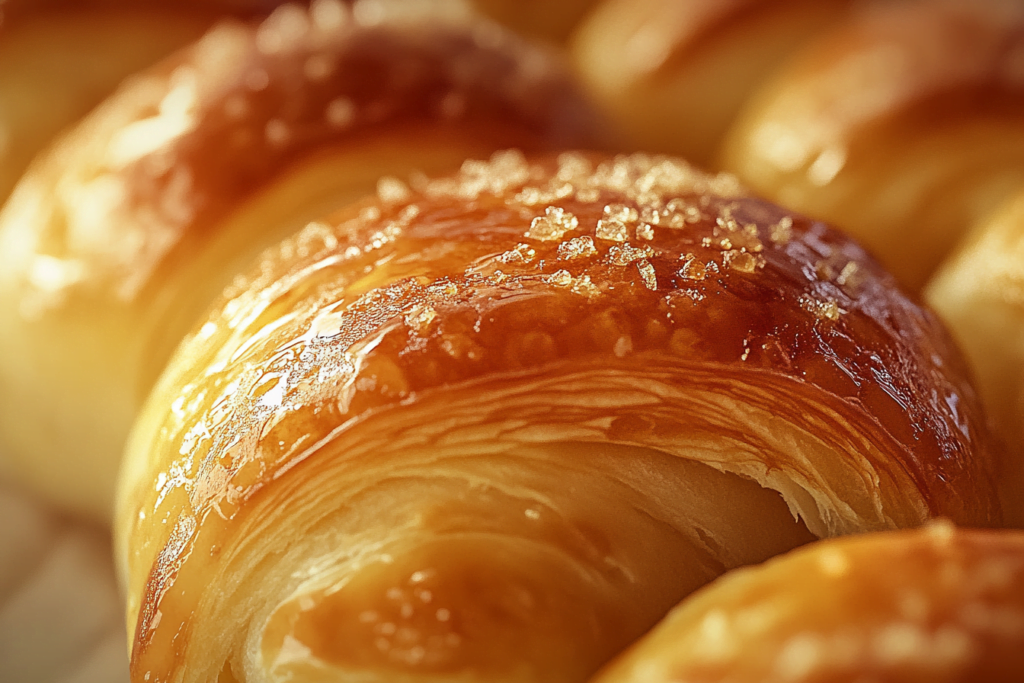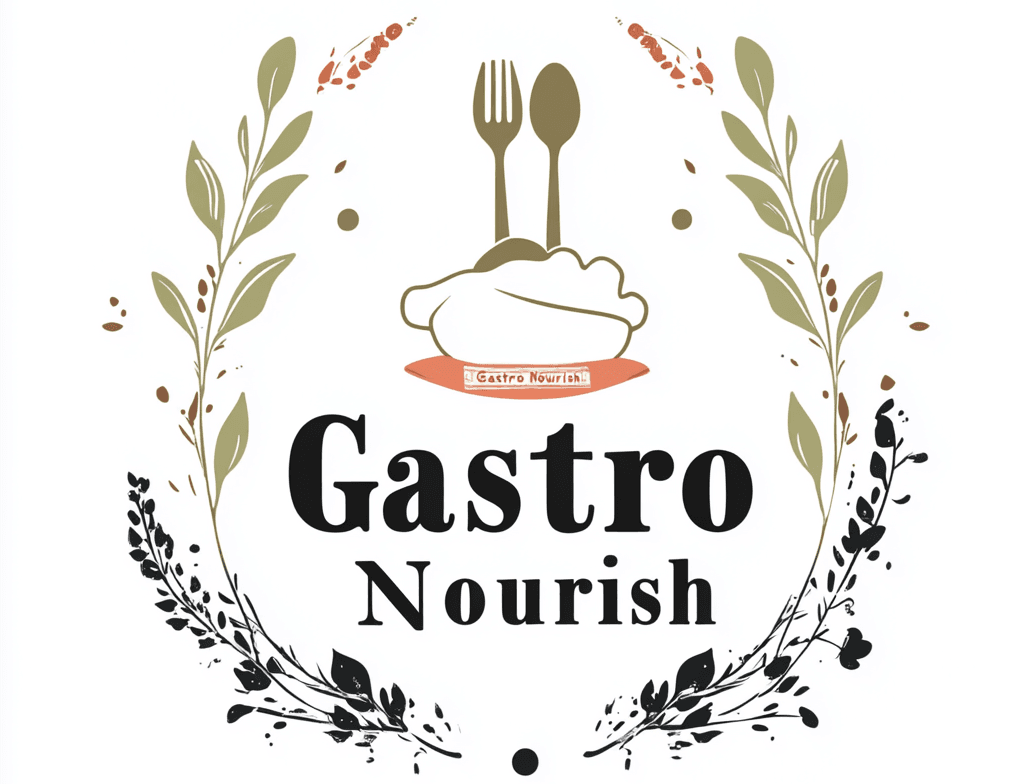Introduction: Mastering the Art of Baking Crescent Rolls

Baking crescent rolls is a delightful culinary adventure that combines the art of pastry-making with the joy of fresh, homemade bread. Whether you’re a seasoned baker or a novice in the kitchen, understanding how long to bake crescent rolls is essential for achieving the perfect result. Knowing the right baking time can elevate your baking game and ensure that your crescent rolls come out golden brown and flaky.
In this article, we’ll explore everything from the ideal baking time to tips for achieving the perfect texture. Specifically, we’ll answer the question: how long to bake crescent rolls? Typically, crescent rolls should be baked at 375°F (190°C) for about 10 to 15 minutes. This temperature allows the rolls to cook evenly, resulting in a deliciously soft interior and a crispy exterior.
To ensure you get the best results, it’s important to keep an eye on the rolls as they bake. If you’re wondering how long to bake crescent rolls in a convection oven, you might want to reduce the temperature slightly and check them a few minutes earlier, as convection ovens can cook faster.
We’ll also delve into variations and creative uses for crescent rolls, ensuring you have a comprehensive guide to this beloved pastry. From savory fillings to sweet treats, knowing how long to bake crescent rolls can help you create a variety of delicious dishes. So, roll up your sleeves and get ready to bake some delicious crescent rolls!
Understanding Crescent Rolls
What Are Crescent Rolls?
Crescent rolls are a type of pastry known for their buttery flavor and flaky texture. Shaped like a crescent moon, these rolls are a staple in many households, often served as a side dish or used in various recipes. The dough is typically made from flour, butter, yeast, and milk, creating a rich and tender pastry that’s hard to resist.
You achieve the unique shape of crescent rolls by rolling the dough into a thin sheet, cutting it into triangles, and then rolling each triangle from the wide end to the narrow tip. This technique not only gives the rolls their signature look but also contributes to their light and airy texture.
The History of Crescent Rolls
You can trace the origins of crescent rolls back to the Austrian kipferl, a crescent-shaped pastry that dates to the 13th century. However, the modern version we know today gained popularity in the 20th century, thanks to the introduction of pre-packaged dough by brands like Pillsbury. This innovation made it easier for home bakers to enjoy fresh crescent rolls without the need for extensive preparation.
Crescent rolls have since become a versatile ingredient in many kitchens, used in both sweet and savory dishes. Their convenience and delicious taste have made them a favorite for holiday meals, family gatherings, and everyday dinners.
Key Ingredients for Crescent Rolls
To make the perfect crescent rolls, you’ll need a few essential ingredients. Flour is the base of the dough, providing structure and texture. Butter is crucial for that rich, flaky consistency, while yeast helps the dough rise and become light and airy. Milk adds moisture and flavor, and a pinch of salt enhances the overall taste.
For those looking to experiment, you can also incorporate additional ingredients like herbs, cheese, or spices to customize your crescent rolls. These variations can add a unique twist to the classic recipe, making your rolls even more delicious.
In this section, we’ve explored what crescent rolls are, their history, and the key ingredients needed to make them. In Part 2, we’ll dive into the specifics of baking time and temperature, ensuring you achieve perfectly baked crescent rolls every time. Stay tuned for more tips and tricks!
Baking Crescent Rolls to Perfection

Ideal Baking Time and Temperature
When it comes to baking crescent rolls, how long to bake crescent rolls? and temperature are crucial to achieving that perfect golden-brown crust and soft, fluffy interior. Typically, crescent rolls are baked at a temperature of 375°F (190°C). This temperature allows the rolls to cook evenly, ensuring that the outside is crisp while the inside remains tender.
The baking time for crescent rolls usually ranges from 10 to 15 minutes. However, this can vary depending on your oven and the size of the rolls. It’s important to keep an eye on them as they bake. You’ll know they’re done when they turn a beautiful golden brown and have a slightly firm texture when tapped.
For those using a convection oven, you might want to reduce the temperature slightly to 350°F (175°C) and check the rolls a few minutes earlier, as convection ovens tend to bake faster due to the circulating hot air.
Tips for Even Baking
To ensure your crescent rolls bake evenly, consider these handy tips. First, make sure your oven is fully preheated before placing the rolls inside. An accurate oven temperature is key to consistent results. Using an oven thermometer can help verify that your oven is at the correct temperature.
Next, arrange the rolls evenly on the baking sheet, leaving enough space between them to allow for expansion as they bake. If the rolls are too close together, they may steam rather than bake, resulting in a less desirable texture.
Rotating the baking sheet halfway through the baking time can also promote even cooking, especially if your oven has hot spots. This simple step ensures that all rolls receive equal heat exposure.
Finally, for an extra touch of flavor and color, brush the tops of the rolls with melted butter before baking. This not only enhances the taste but also helps achieve that lovely golden hue.

Common Mistakes to Avoid
Even experienced bakers can encounter hiccups when baking crescent rolls. One common mistake is overproofing the dough. If the dough rises for too long, the rolls may collapse during baking, resulting in a dense texture. To avoid this, keep an eye on the dough and proceed with shaping as soon as it has doubled in size.
Another pitfall is underbaking. While it’s tempting to pull the rolls out of the oven as soon as they look done, it’s important to ensure they’re fully cooked inside. If you’re unsure, you can use a toothpick to check for doneness; it should come out clean when inserted into the center of a roll.
In this section, we’ve covered the ideal baking time and temperature for crescent rolls, along with tips for even baking and common mistakes to avoid. In Part 3, we’ll explore creative variations and fillings to take your crescent rolls to the next level. Stay tuned for some delicious inspiration!
Creative Variations and Fillings
Savory Fillings for Crescent Rolls
Crescent rolls are incredibly versatile, and one of the best ways to elevate them is by adding savory fillings. These can transform a simple roll into a delightful appetizer or a satisfying snack. Some popular savory fillings include cheese, herbs, and meats.
For a cheesy twist, try adding shredded cheddar or mozzarella to the dough before rolling it up. You can also sprinkle in some herbs like rosemary or thyme for an aromatic touch. If you’re a fan of meat, consider adding slices of ham or turkey, which pair beautifully with the buttery flavor of the rolls.
Another delicious option is to create a pizza-inspired crescent roll. Spread a thin layer of marinara sauce on the dough, sprinkle with mozzarella cheese, and add pepperoni slices before rolling. These pizza rolls are sure to be a hit with both kids and adults alike.
Sweet Fillings for Crescent Rolls
If you have a sweet tooth, crescent rolls can also be filled with sweet ingredients to create a delectable dessert or breakfast treat. One classic option is to fill the rolls with chocolate chips or Nutella, creating a gooey, chocolatey center that’s hard to resist.
For a fruity variation, try adding a spoonful of fruit preserves or fresh berries to the dough before rolling. This creates a burst of fruity flavor with every bite. You can also sprinkle a bit of cinnamon and sugar on the dough for a cinnamon roll-inspired treat.
For an extra indulgent option, consider making cream cheese-filled crescent rolls. Mix softened cream cheese with a bit of sugar and vanilla extract, then spread it on the dough before rolling. The result is a creamy, sweet filling that pairs perfectly with the flaky pastry.
Unique Crescent Roll Ideas
Beyond traditional fillings, there are countless ways to get creative with crescent rolls. For a breakfast twist, try making crescent roll breakfast sandwiches. Fill the rolls with scrambled eggs, bacon, and cheese for a hearty start to your day.
For a party appetizer, consider making crescent roll pinwheels. Spread a layer of cream cheese and your choice of toppings, such as smoked salmon or sun-dried tomatoes, on the dough. Roll it up, slice into pinwheels, and bake until golden.
You can also use crescent rolls as a base for mini quiches. Press the dough into muffin tins, fill with a mixture of eggs, cheese, and vegetables, and bake until set. These mini quiches are perfect for brunch or a light lunch.
In this section, we’ve explored a variety of creative fillings and variations for crescent rolls, from savory to sweet. In Part 4, we’ll discuss how to store and reheat crescent rolls to maintain their freshness and flavor. Stay tuned for more tips and tricks!
Storing and Reheating Crescent Rolls
How to Store Crescent Rolls

Once you’ve baked your delicious crescent rolls, you might find yourself with leftovers. Proper storage is key to maintaining their freshness and flavor. If you plan to eat them within a day or two, store the rolls in an airtight container at room temperature. This will keep them soft and prevent them from drying out.
For longer storage, consider refrigerating the rolls. Place them in a sealed container or wrap them tightly in plastic wrap to prevent them from absorbing any odors from the fridge. Refrigerated crescent rolls can last up to a week.
If you want to keep them for an extended period, freezing is the best option. Wrap each roll individually in plastic wrap or aluminum foil, then place them in a freezer-safe bag. This method helps prevent freezer burn and keeps the rolls fresh for up to three months.
Reheating Crescent Rolls
Reheating crescent rolls properly ensures they retain their soft, flaky texture. If you’re reheating rolls stored at room temperature, a quick zap in the microwave for about 10-15 seconds should do the trick. This method is fast and convenient, but be careful not to overheat, as it can make the rolls tough.
For refrigerated or frozen rolls, the oven is your best bet. Preheat your oven to 350°F (175°C) and place the rolls on a baking sheet. Cover them with aluminum foil to prevent them from drying out, and heat for about 10 minutes, or until they’re warmed through. This method helps restore the rolls’ original texture and flavor.
If you’re in a hurry, you can also use a toaster oven. Set it to a low temperature and heat the rolls for a few minutes until they’re warm and soft.
Tips for Maintaining Freshness
To keep your crescent rolls tasting fresh, consider these additional tips. First, avoid storing rolls in the refrigerator unless necessary, as the cold can cause them to become stale more quickly. If you do refrigerate them, make sure they’re well-wrapped to prevent moisture loss.
When freezing rolls, label the packaging with the date so you can keep track of how long they’ve been stored. This helps ensure you enjoy them at their best quality.
Finally, if you plan to serve crescent rolls at a gathering, consider baking them fresh on the day of the event. This way, you can enjoy their full flavor and texture without the need for reheating.
In this section, we’ve covered how to store and reheat crescent rolls to maintain their freshness and flavor. In Part 5, we’ll address common questions and concerns about baking crescent rolls, providing helpful tips and insights. Stay tuned for more information!
Common Questions and Concerns
FAQs About Baking Crescent Rolls
When it comes to baking crescent rolls, there are a few common questions that often arise. Let’s address some of these to help you achieve the best results every time.
- How long does it take to bake crescent rolls?
Typically, crescent rolls bake in about 10 to 15 minutes at 375°F (190°C). However, baking times can vary based on your oven and the size of the rolls, so it’s important to keep an eye on them. - Can I make crescent rolls ahead of time?
Yes, you can prepare the dough in advance and refrigerate it for up to 24 hours before baking. This can be a time-saver, especially if you’re planning to serve them for a special occasion. - Why are my crescent rolls not rising properly?
If your rolls aren’t rising, it could be due to inactive yeast or a dough that’s too cold. Ensure your yeast is fresh and that the dough is proofed in a warm environment.
Troubleshooting Common Issues
Even experienced bakers can encounter issues when making crescent rolls. Here are some common problems and how to fix them:
- Rolls are too dense:
This can happen if the dough is over-kneaded or if there’s too much flour. Be sure to knead the dough just until it’s smooth and elastic, and measure your ingredients accurately. - Rolls are too dry:
Dry rolls can result from overbaking or not enough fat in the dough. Check your baking time and temperature, and consider adding a bit more butter or milk to the dough. - Rolls are unevenly baked:
Uneven baking can occur if the rolls are placed too close together on the baking sheet. Ensure there’s enough space between each roll for even heat distribution.
Tips for Perfect Crescent Rolls Every Time
To consistently bake perfect crescent rolls, keep these tips in mind:
- Use fresh ingredients:
Fresh yeast and high-quality butter can make a significant difference in the flavor and texture of your rolls. - Don’t rush the proofing process:
Allow the dough to rise until it has doubled in size. This step is crucial for achieving a light and airy texture. - Experiment with flavors:
Don’t be afraid to try different fillings and toppings to customize your crescent rolls. From herbs and cheese to sweet glazes, the possibilities are endless.
In this section, we’ve addressed common questions and concerns about baking crescent rolls, along with troubleshooting tips and advice for achieving perfect results. In Part 6, we’ll share personal experiences and anecdotes related to baking crescent rolls, adding a personal touch to our exploration. Stay tuned for more insights!
Personal Experience with Baking Crescent Rolls
My Journey with Crescent Rolls
The First Attempt: A Daunting Challenge
Baking crescent rolls has always been a delightful adventure in my kitchen. I remember the first time I attempted to make them from scratch. The idea of creating those perfectly flaky, buttery rolls seemed daunting, but I was eager to give it a shot.
The Process: Mixing and Kneading
I started with a simple recipe, gathering all the ingredients and carefully following each step. As I mixed the dough, the kitchen filled with the comforting aroma of yeast and butter. Kneading the dough was surprisingly therapeutic, and watching it rise was nothing short of magical.
Shaping the Rolls: A Creative Experience
The real fun began when it was time to shape the rolls. Rolling out the dough and cutting it into triangles felt like a creative process, and I couldn’t wait to see how they’d turn out. As they baked, the anticipation grew, and I found myself peeking into the oven every few minutes.
The Reward: Golden-Brown Perfection
When the timer finally went off, I was greeted by a tray of golden-brown crescent rolls, their buttery aroma wafting through the air. I couldn’t resist tasting one right away, and the first bite was pure bliss. The rolls were soft, flaky, and everything I had hoped for.
Experimenting with Flavors: A Baking Staple
Since that first attempt, crescent rolls have become a staple in my baking repertoire. I’ve experimented with various fillings, from savory cheese and herbs to sweet chocolate and fruit preserves. Each variation brings its own unique twist, and it’s always exciting to try something new.
Lessons Learned: Patience and Precision
Baking crescent rolls has taught me the importance of patience and precision in the kitchen. It’s a process that requires attention to detail, but the reward is well worth the effort. Whether I’m making them for a special occasion or just a cozy weekend breakfast, crescent rolls never fail to bring joy to the table.
A Symbol of Creativity: Encouragement to Try
In my experience, crescent rolls are more than just a pastry; they’re a symbol of creativity and comfort. If you haven’t tried making them yet, I encourage you to give it a go. You might just discover, as I did, that baking crescent rolls is a truly satisfying and delicious endeavor.
Versatility of Crescent Rolls
Incorporating Crescent Rolls into Meals
Crescent rolls are not just a delightful standalone treat; they can also be a versatile addition to a variety of meals. Their buttery, flaky texture complements a wide range of dishes, making them a favorite in many households.
For breakfast, crescent rolls can be paired with eggs and bacon for a hearty start to the day. You can also use them to create breakfast sandwiches by wrapping them around sausage links or filling them with scrambled eggs and cheese before baking.
At lunchtime, crescent rolls can serve as a delicious side to soups and salads. Their light texture is perfect for dipping into a warm bowl of soup, while their subtle flavor complements fresh greens and vegetables.
For dinner, crescent rolls can be transformed into a variety of appetizers and main courses. Use them to make mini calzones by filling them with marinara sauce, mozzarella cheese, and pepperoni. Or, create savory pinwheels by spreading cream cheese and smoked salmon on the dough before rolling and slicing.
Crescent Rolls for Special Occasions
Crescent rolls are also a fantastic choice for special occasions and gatherings. Their elegant appearance and delicious taste make them a hit at parties and holiday feasts.
For a festive appetizer, consider making crescent roll wreaths. Arrange the rolls in a circular pattern on a baking sheet, and fill the center with a creamy dip or cheese spread. This eye-catching presentation is sure to impress your guests.
During the holiday season, crescent rolls can be used to create sweet treats like cinnamon sugar twists or chocolate-filled pastries. These indulgent desserts are perfect for sharing with family and friends.
For a more formal occasion, crescent rolls can be served alongside a roast or turkey dinner. Their buttery flavor pairs beautifully with savory meats and rich gravies, adding a touch of elegance to the meal.
Creative Uses for Leftover Crescent Rolls
If you find yourself with leftover crescent rolls, don’t let them go to waste. There are plenty of creative ways to repurpose them into new dishes.
One option is to make a breakfast casserole by layering torn crescent rolls with eggs, cheese, and your choice of meats or vegetables. Bake until the eggs are set for a delicious and filling breakfast.
You can also use leftover rolls to make bread pudding. Tear the rolls into pieces and soak them in a mixture of milk, eggs, sugar, and vanilla. Bake until golden and serve with a drizzle of caramel sauce for a decadent dessert.
In this section, we’ve explored the versatility of crescent rolls and how they can be incorporated into various meals and occasions. Whether you’re serving them as a side dish, appetizer, or dessert, crescent rolls are sure to delight your taste buds and impress your guests. Enjoy experimenting with these delicious pastries in your kitchen!

